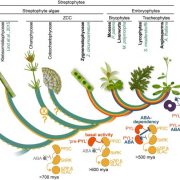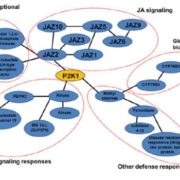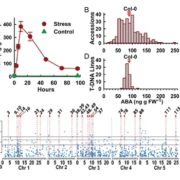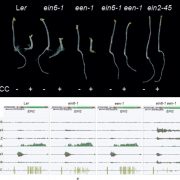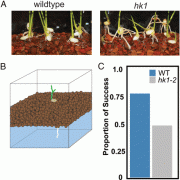Advances in the analysis of the molecular mechanism of rice tiller angle regulation in genetic development
Source: Institute of Genetics and Developmental Biology Date: 2018-06-22 【 Title : Xiaozhong University 】(Translated from the original Chinese by Google)
The angle of tillering is the angle between the tiller and the main stem of the grass family and is closely related to the crop population. The analysis of the molecular mechanism of rice tiller angle regulation has important theoretical significance and application value for improving rice plant type and increasing yield. For a long time, researchers have mainly used genetic methods to discover the main QTLs and regulatory genes that regulate the angle of rice tillers . However, the tillering angle is a complex agronomic trait, which is controlled by many factors. In the face of some more useful micro-genes, it is very difficult to rely solely on traditional genetic methods for cloning. Therefore, the new method of seeking to excavate rice tiller angle regulation genes has become an important issue to be solved in this field.
 Studies have shown that the formation of rice tiller angle is closely related to gravity response. The Wang Yonghong team of the Institute of Genetics and Developmental Biology of the Chinese Academy of Sciences and Li Jiayang teamed up with the gravity reaction as the entry point, combined with RNA-seq technology and bioinformatics methods to explore the dynamic transcriptome changes during the process of rice stem gravity reaction. An effective way to explore the rice tiller angle regulation genes and regulatory pathways provides new ideas for research in this field. In this study, a high-resolution dynamic transcriptome change based on rice stem gravity reaction revealed a core pathway for rice tiller angle regulation (Fig.). Among them, HEAT STRESS TRANSCRIPTIONAL FACTOR 2D ( HSFA2D ) is an early-response gene for gravity response. This gene regulates the asymmetric distribution of auxin at the base of the stem by influencing the expression of LAZY1 gene ( Li et al., 2007 ), thereby inducing WUSCHEL RELATED HOMEOBOX6. ( WOX6 ) and WOX11 exhibit asymmetric expression at the base of rice stems . Studies have shown that rice WOX6 and WOX11 are likely to be the core transcription factors in the bifurcation angle regulation pathway. This study not only establishes a direct molecular link between gravity response, auxin, and rice tiller angles, but also provides important information for the systematic analysis of the regulatory network of rice tiller angles and further mining valuable genes.
Studies have shown that the formation of rice tiller angle is closely related to gravity response. The Wang Yonghong team of the Institute of Genetics and Developmental Biology of the Chinese Academy of Sciences and Li Jiayang teamed up with the gravity reaction as the entry point, combined with RNA-seq technology and bioinformatics methods to explore the dynamic transcriptome changes during the process of rice stem gravity reaction. An effective way to explore the rice tiller angle regulation genes and regulatory pathways provides new ideas for research in this field. In this study, a high-resolution dynamic transcriptome change based on rice stem gravity reaction revealed a core pathway for rice tiller angle regulation (Fig.). Among them, HEAT STRESS TRANSCRIPTIONAL FACTOR 2D ( HSFA2D ) is an early-response gene for gravity response. This gene regulates the asymmetric distribution of auxin at the base of the stem by influencing the expression of LAZY1 gene ( Li et al., 2007 ), thereby inducing WUSCHEL RELATED HOMEOBOX6. ( WOX6 ) and WOX11 exhibit asymmetric expression at the base of rice stems . Studies have shown that rice WOX6 and WOX11 are likely to be the core transcription factors in the bifurcation angle regulation pathway. This study not only establishes a direct molecular link between gravity response, auxin, and rice tiller angles, but also provides important information for the systematic analysis of the regulatory network of rice tiller angles and further mining valuable genes.
The study was published online in The Plant Cell Journal on June 18 ( DOI: 10.1105/tpc.18.00063 ) . Wang Yonghong, a doctoral student of the research group Zhang Ning, a postdoctoral Yu Yu, and an associate researcher Li Jiayang’s research group, Yu Wei, were the co-first authors of the paper, and Wang Yonghong was the author of the correspondence. Dr. Chen Haofeng of the genome analysis platform and Steven M. Smith of the University of Tasmania, Australia participated in the study. The study was funded by the National Natural Science Foundation of China’s major research program, the ” 973″ project of the Ministry of Science and Technology , and the special pilot project of the Chinese Academy of Sciences.
(Editor: Ye Ruiyou)


